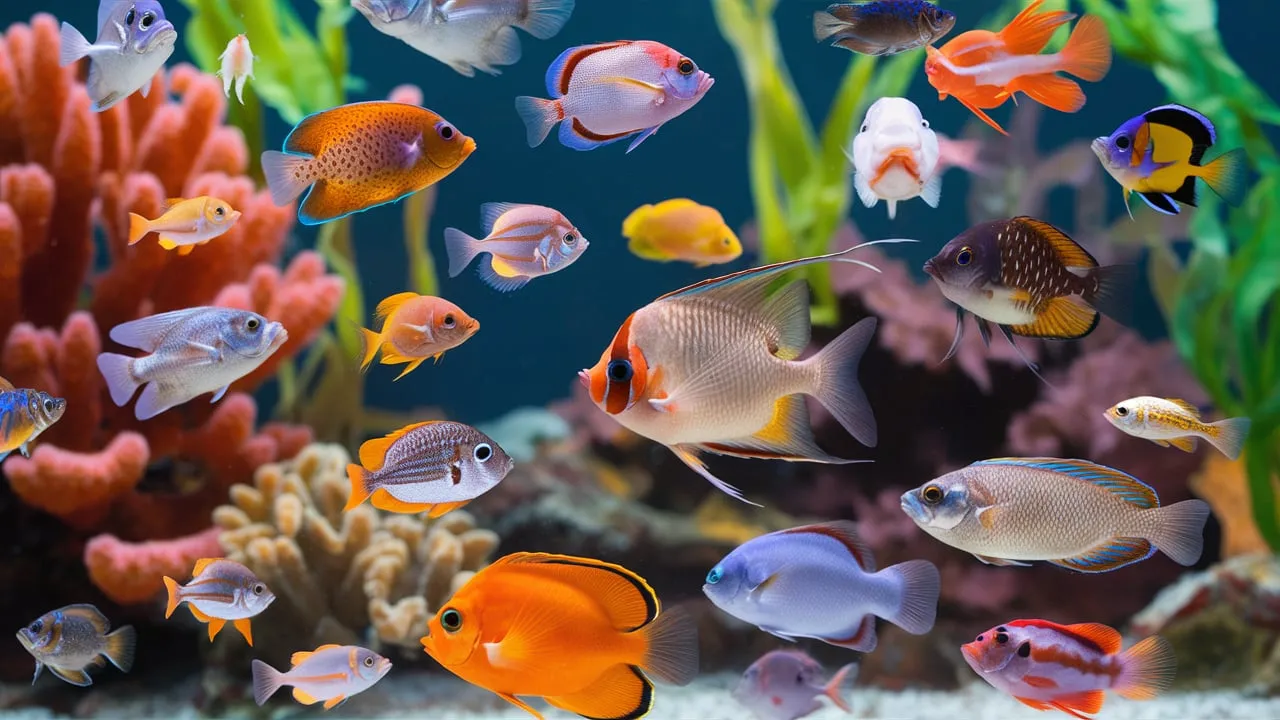When setting up an aquarium, understanding Aquarium Fish Size is crucial for creating a harmonious underwater environment. The size of your fish not only impacts their health but also influences tank dynamics and compatibility.
This guide Betta Fish Guide aims to delve into the various aspects of aquarium fish sizes, helping you make informed decisions for your aquatic friends.
The Importance of Proper Fish Size in Aquariums
Why Size Matters?
The size of fish in an aquarium is not just about aesthetics; it’s a fundamental aspect of responsible fishkeeping. Here’s why:
- Water Quality: Larger fish produce more waste, affecting water parameters more quickly.
- Oxygen Requirements: Bigger fish consume more oxygen, potentially straining smaller setups.
- Swimming Space: Fish need adequate room to swim and exhibit natural behaviors.
- Territorial Behavior: Some species become more territorial as they grow, requiring more space.
- Filtration Needs: Larger fish necessitate more powerful filtration systems.
The One-Inch Per Gallon Rule: Myth or Guideline?
You may have heard of the “one-inch per gallon” rule, but is it reliable? Let’s examine this common guideline:
Pros
- Simple to understand and apply
- Provides a basic starting point for beginners
Cons
- Doesn’t account for fish shape or species-specific needs
- Ignores the bioload differences between fish of the same length
- Fails to consider the three-dimensional nature of aquarium space
While the one-inch per gallon rule can be a starting point, it’s crucial to consider other factors for a more accurate approach to stocking your aquarium.
Understanding Aquarium Fish Size Classifications
Aquarium fish sizes are typically categorized into four main groups:
Small Fish (Under 2 inches)
These miniature marvels are perfect for smaller tanks and nano tanks. They often come in vibrant colors and unique patterns, adding a splash of personality to your aquarium. Examples include:
- Neon Tetras: These tiny, shimmering fish are known for their vibrant colors and schooling behavior.
- Guppies: These livebearers are incredibly diverse in color and pattern, making them a popular choice for beginners.
- Dwarf Corydoras: These peaceful bottom dwellers are great for cleaning up debris and adding a touch of activity to your tank.

Medium Fish (2-6 inches)
This category encompasses a wide range of fish, offering a balance between size and
personality. They are suitable for tanks of moderate size and can be a great addition to community tanks. Examples include:
- Angelfish: These elegant fish are known for their graceful movements and striking patterns.
- Discus: These iconic fish are prized for their vibrant colors and demanding care requirements.
- Rainbowfish: These active and colorful fish add a vibrant touch to any aquarium.
Large Fish (6-12 inches)
These impressive fish require larger tanks and careful planning. They can be a statement piece in your aquarium, but their size and needs should be carefully considered. Examples include:
- Oscar: These intelligent and active fish are known for their unique personalities and large size.
- Jack Dempsey: These aggressive fish require a large tank and a dedicated aquarist.
- Arowana: These majestic fish are prized for their beauty and impressive size, but require specialized care.
Giant Fish (Over 12 inches)
These colossal creatures demand massive tanks and extensive knowledge. They are often kept by experienced aquarists who have the resources and expertise to provide for their unique needs. Examples include:
- Redtail Catfish: These bottom dwellers can grow to impressive sizes and require large tanks.
- Giant Gourami: These peaceful fish are known for their size and unique appearance.
- Arowana: Some species of Arowana can reach over 3 feet in length, requiring specialized housing and care.
Factors to Consider When Choosing Fish Size
- Tank Size
The most important factor in choosing fish size is the size of your aquarium. Overcrowding can lead to stress, disease, and even aggression.
- Fish Behavior
Some fish are naturally more active than others. Active fish require more space to swim and explore, while more sedentary fish may be content in smaller tanks.
- Fish Compatibility
Not all fish get along. It’s crucial to research the compatibility of different species before introducing them to your tank. Some fish may be territorial or aggressive towards other species, leading to conflict.
- Fish Diet
Different fish have different dietary needs. Some fish are omnivores, while others are carnivores or herbivores. It’s important to choose fish that have compatible dietary needs to ensure they are all getting the nutrients they require.
- Tank Maintenance
Larger fish produce more waste, requiring more frequent water changes and tank maintenance. Consider your time commitment and resources before choosing large fish.
- Fish Growth Rate
Some fish grow rapidly, while others grow slowly. Consider the long-term growth potential of your fish and ensure your tank will be able to accommodate their full size.
Conclusion
Choosing the right aquarium fish size is essential for creating a healthy and harmonious environment for your aquatic companions. By understanding the different size classifications, considering the factors outlined above, and researching the specific needs of your chosen species, you can ensure that your fish thrive in their new home.
Remember, responsible fishkeeping involves carefully planning and providing the best possible care for your aquatic friends.

Related Posts
Are Betta Fish Nocturnal? Mystery of Betta Sleep Patterns
Shrimp Tank Mates: Choosing The Right Companions
Are Fish Omnivores? A Look at Fish Feeding Habits